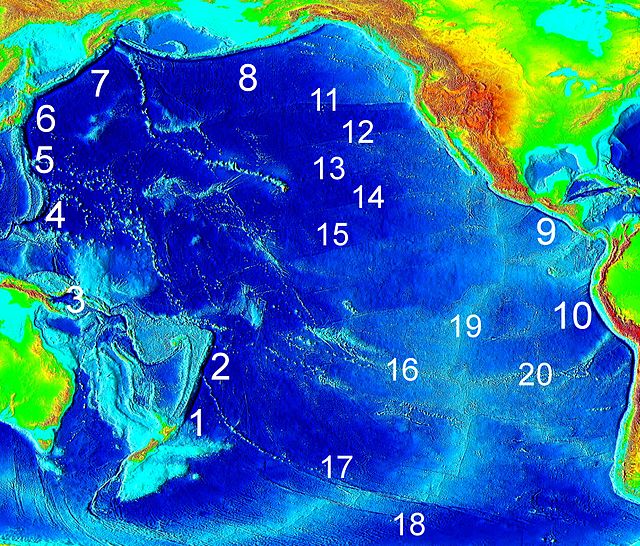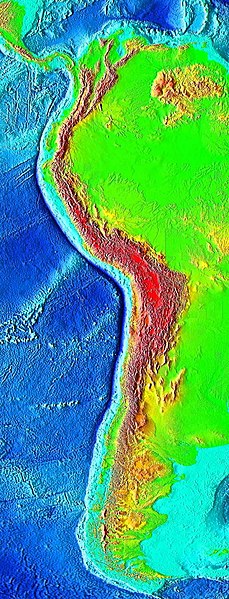The Mariana Trench is an oceanic trench located in the western Pacific Ocean, about 200 kilometres (124 mi) east of the Mariana Islands; it is the deepest oceanic trench on Earth. It is crescent-shaped and measures about 2,550 km (1,580 mi) in length and 69 km (43 mi) in width. The maximum known depth is 10,984 ± 25 metres at the southern end of a small slot-shaped valley in its floor known as the Challenger Deep. The deepest point of the trench is more than 2 km (1.2 mi) farther from sea level than the peak of Mount Everest.
The bathyscaphe Trieste (designed by Auguste Piccard), the first crewed vehicle to reach the bottom of the Mariana Trench
Oceanic trenches are prominent, long, narrow topographic depressions of the ocean floor. They are typically 50 to 100 kilometers wide and 3 to 4 km below the level of the surrounding oceanic floor, but can be thousands of kilometers in length. There are about 50,000 km (31,000 mi) of oceanic trenches worldwide, mostly around the Pacific Ocean, but also in the eastern Indian Ocean and a few other locations. The greatest ocean depth measured is in the Challenger Deep of the Mariana Trench, at a depth of 10,994 m (36,070 ft) below sea level.
Major Pacific trenches (1–10) and fracture zones (11–20): 1. Kermadec 2. Tonga 3. Bougainville 4. Mariana 5. Izu–Ogasawara 6. Japan 7. Kuril–Kamchatka 8. Aleutian 9. Middle America 10. Peru–Chile 11. Mendocino 12. Murray 13. Molokai 14. Clarion 15. Clipperton 16. Challenger 17. Eltanin 18. Udintsev 19. East Pacific Rise (S-shaped) 20. Nazca Ridge
Cross section of an oceanic trench formed along an oceanic-oceanic convergent boundary
The Peru–Chile Trench is located just left of the sharp line between the blue deep ocean (on the left) and the light blue continental shelf, along the west coast of South America. It runs along an oceanic-continental boundary, where the oceanic Nazca Plate subducts beneath the continental South American Plate
The Puerto Rico Trench





